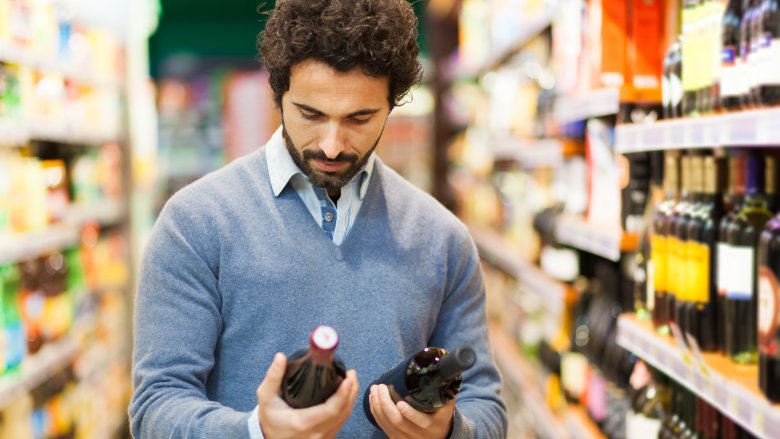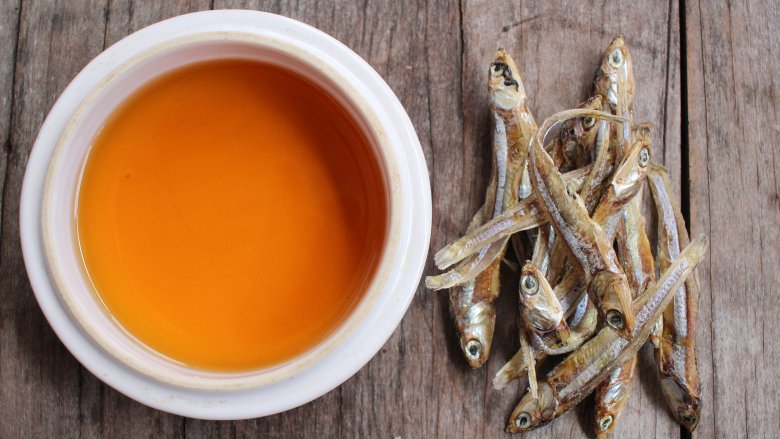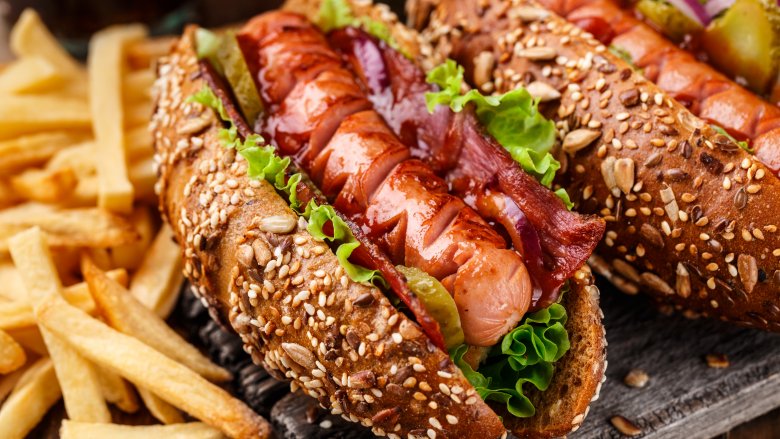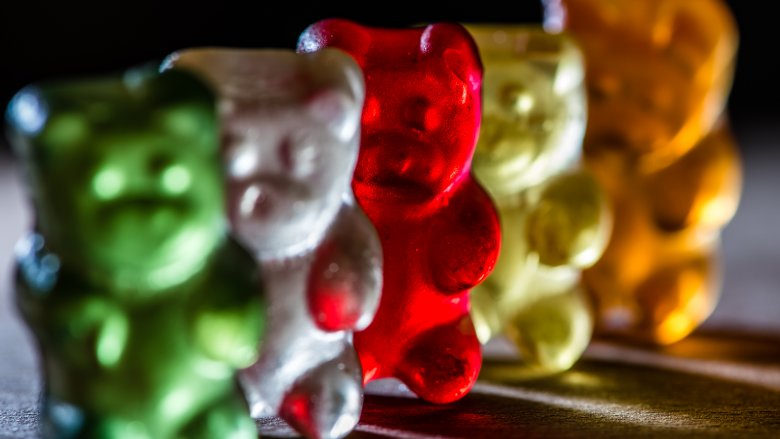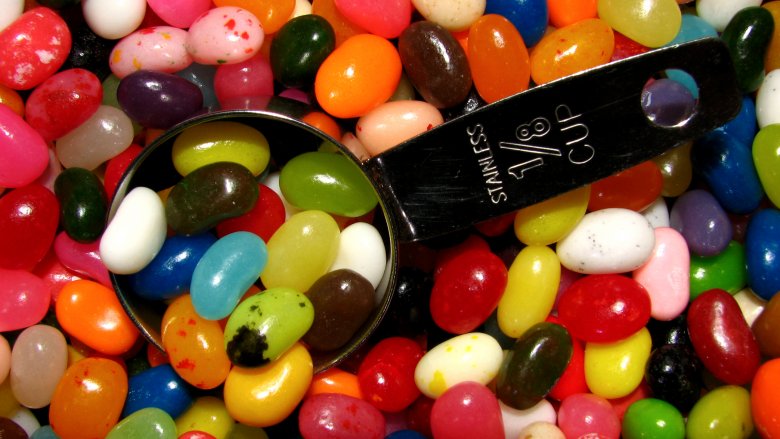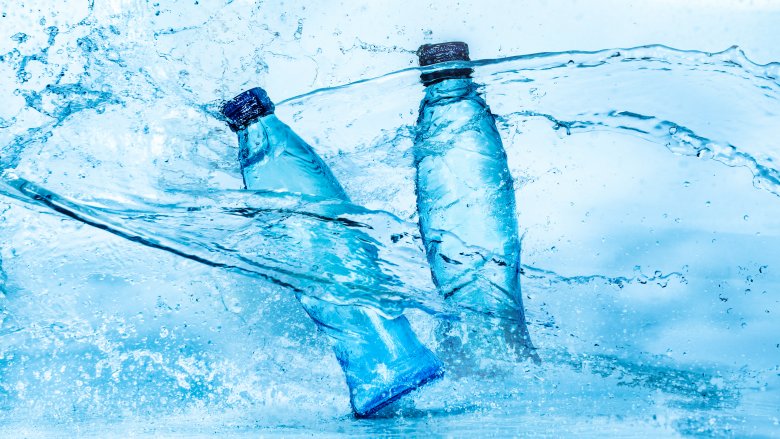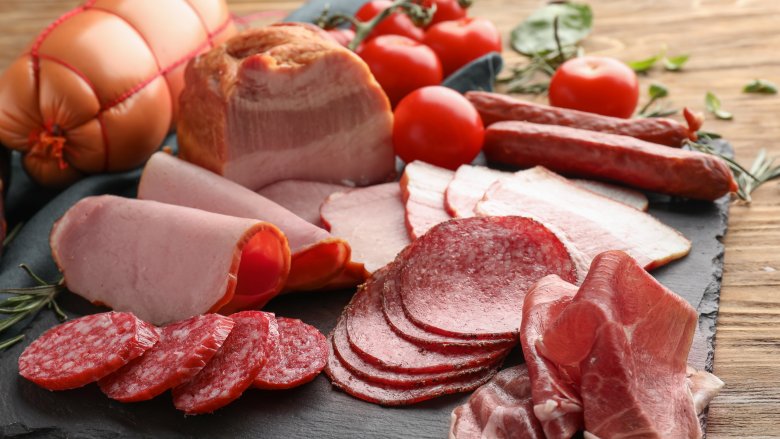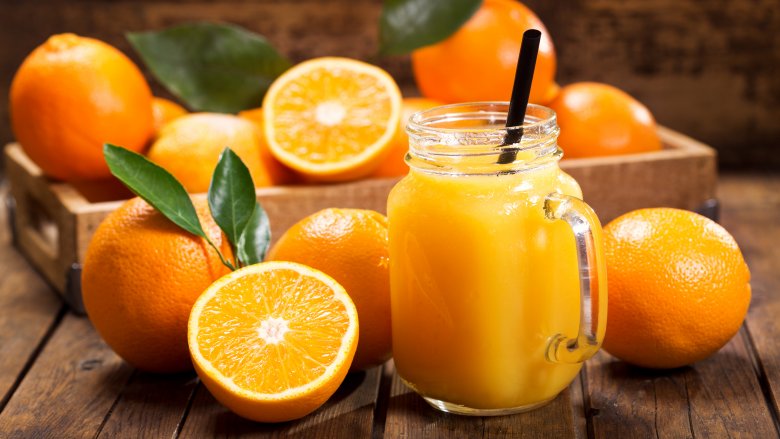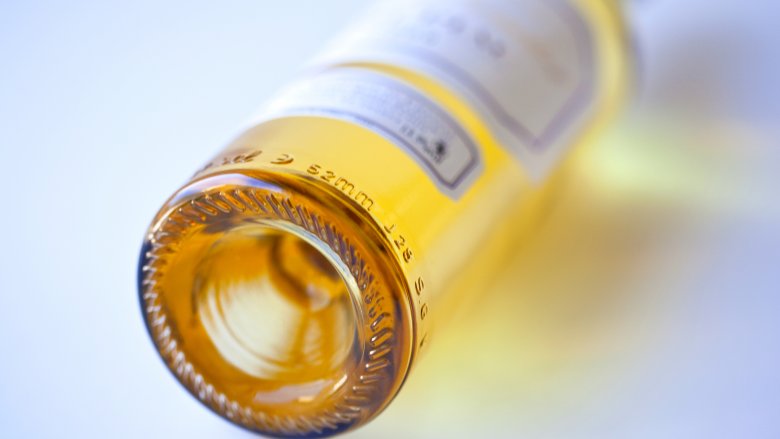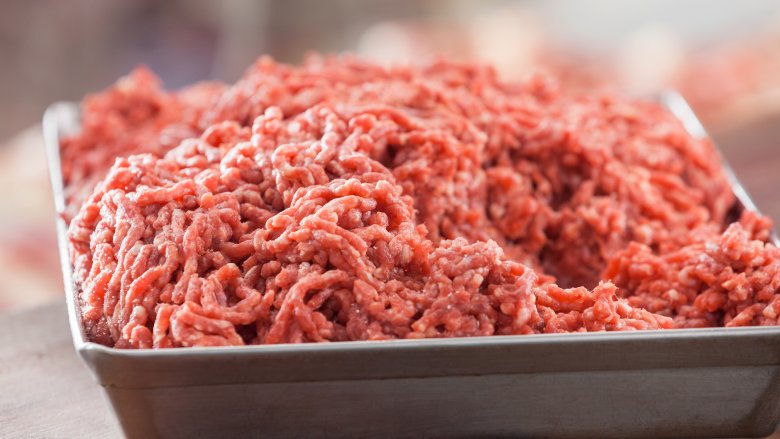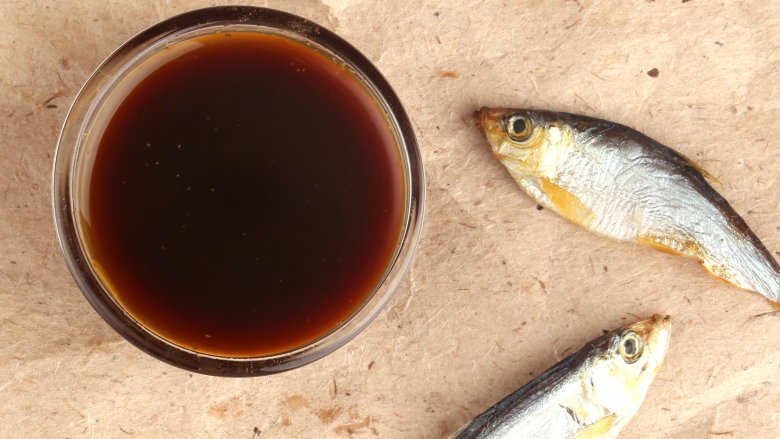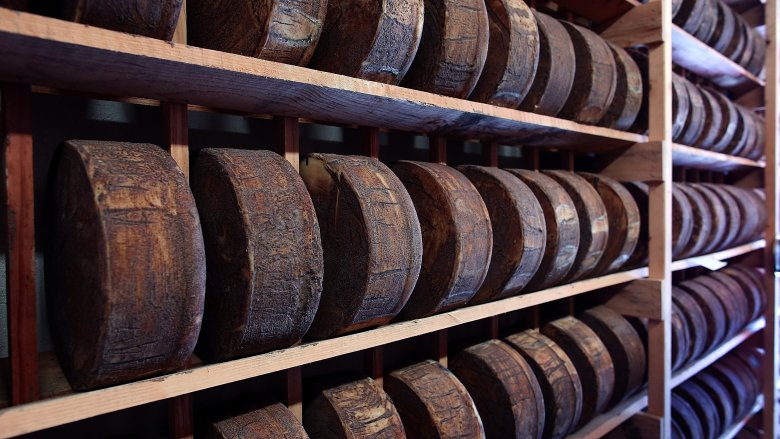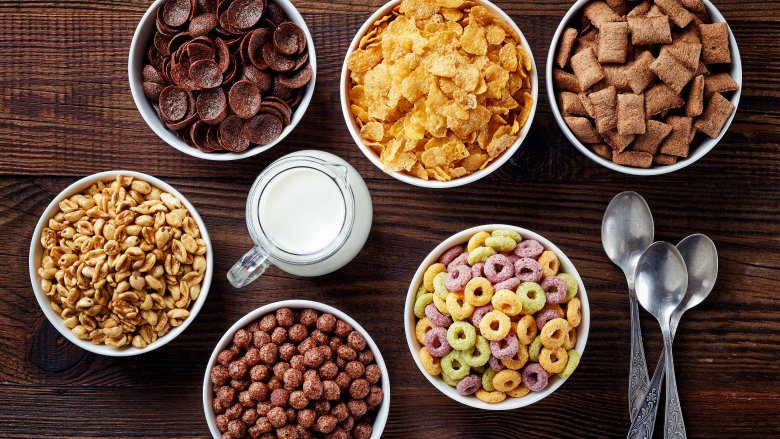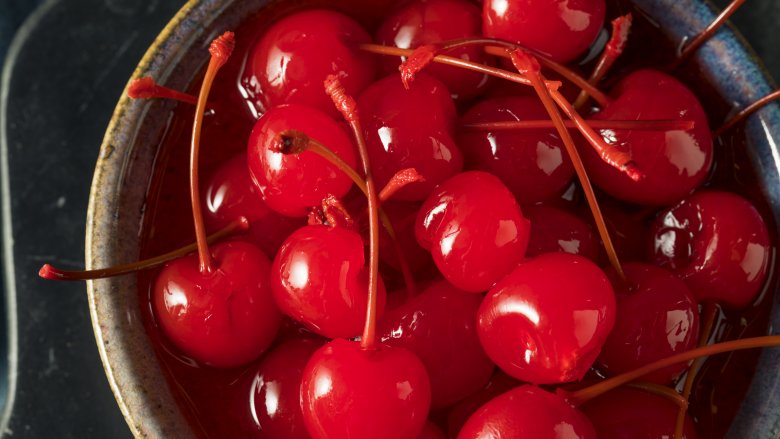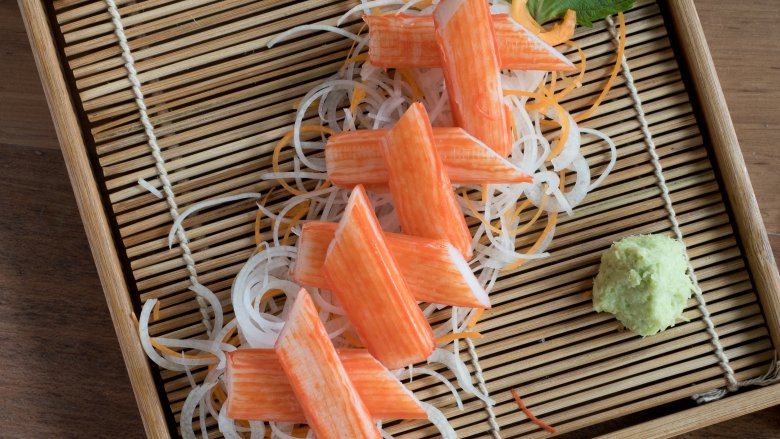Foods You'll Stop Buying Once You Know How They Are Made
Today's 21st century conveniences make it super easy to get almost any type of food you want. Pick it up off the shelves at the grocery store, order it on Amazon, or order it from a local supermarket and have it delivered. It's normal today, and it's almost mind-boggling to think that even a century ago, getting food was hard.
That convenience has come with a price, and not just one with dollar signs. Since it's so easy to get food, it's easy to think it must be a simple matter to make food, too. We might grab some candy in the checkout line and not think twice about where it came from, or we might pick up a mix of cheeses for snacking on when the neighbors come over for a weekly board game night. It's all harmless enough, right?
Not exactly. There's actually a number of foods that are made in ways that might make you rethink throwing them in your cart, and you know the old saying: knowledge is power.
Fish sauce
National Geographic says fish sauce is essentially a modern incarnation of the ancient Roman condiment garum, which was made by filling vats with fish guts, herbs, and salt then letting it sit in the sun until it developed just the right amount of funk. Sounds gross, right? That's not just some olde-timey bit of nastiness — it's basically how the fish sauce in your kitchen cupboard is still made.
A Traveller's Journal calls Phu Quoc fish sauce among the most prized of Asian fish sauces, and it's made using the same anchovies-only method that's been used for the past 200 years. It involves anchovies and a salt water brine being mixed, transferred to giant, rattan wooden barrels, and left to ferment in the island sun. The contents of the barrel starts to liquify, and the stink? It's unmistakable.
After it sits for a week, there's a daily routine of draining off whatever's turned to liquid and recirculating back into the vats with the fermenting fish. That's done over and over, and it can take up to a year for manufacturers to get the right amount of funk and consistency. Doesn't that sound tasty?
Hot dogs
First, let's point out that not all hot dogs are created equal. There are some that are more healthy and less mystery meat than others (and we take a look at some of the best and worst here.) But the process of actually making hot dogs is super gross.
The National Hot Dog & Sausage Council says (via Gizmodo) that hot dogs are made with trimmings. That's true, but it's not the whole truth. Just listen to this explanation of "trimmings" from the Food and Agriculture Organization of the UN: "The raw meat materials used for precooked-cooked products are lower-grade muscle trimmings, fatty tissues, head meat, animal feet, animal skin, blood, liver, and other edible slaughter by-products."
The FAO also calls it "meat batter", and that's a pretty perfect example of two words that just shouldn't go together. In the actual manufacturing process, all the trimmings go through a series of pre-cooking, pureeing, and seasoning processes, after which they're squeezed into casings. (Remember, "natural casing" is just a not-as-gross-sounding way of saying your meat batter is being squirted into intestines.) There's no amount of ketchup and mustard that can hide that knowledge.
Gummy bears
When Belgian filmmaker Alina Kneepkens made a short film documenting every step in the process of making gummy bears (and any other gummy candy), Insider noted it was so graphic it wasn't just hard to watch, but that it would turn people off from ever eating any gummy candy ever again.
Without getting into the gory details, it's so bad solely because of the gelatin — a main ingredient in gummy bears. Well before the bright colors are added and the fun shapes are formed, animal carcasses are broken down, turned into parts, and the skin and bones are boiled for a long, long time. It's all to get gelatin, the ingredient that gives the gummy treats their "gummy" texture. It's one of those things that even if you know the basic details, you're not prepared for actually seeing the gory details — and it's also one of the perfect examples of just how little we really know about how our food is made. Kneepkens shows it all, and it just make might you want to spend a little extra cash on those vegan gummy bears that get their texture from agar (which is taken from algae) instead of the boiled bones and skin of animals.
Strangely-flavored jelly beans
Ever get those Jelly Belly boxes with the really gross flavors? Harry Potter fans know they're called Bertie Bott's Every Flavour Beans, and they're also a part of Jelly Belly's BeanBoozled product line. They're great... once in a while, when you're prepared for the possibility you're going to eat something that tastes like vomit, skunk, or rotten eggs. How the heck do they get the flavors so close?
According to Mental Floss, Jelly Belly relies on a combination of our sense of taste and smell to create these nasty flavors, and the process is pretty gross. They take the real thing — like socks that have been worn and aged for weeks to cultivate that powerful stink — and put it into a gas chromatograph. The object is then heated, and it gives off vapors of the stink they're trying to recreate. The machine maps the chemical makeup of the stink, translates it into flavors, and then it's remade into Jelly Belly flavor juice.
In a nutshell, it tastes so realistic because it's based on the exact chemical signature of the real thing. Still hungry?
Bottled water
Nestle, the BBC reports, pays just $524 a year for a permit to extract millions of gallons of water out of California's national forests. In 2015, they diverted 36 million gallons... at the same time state residents were living under strict water use regulations and drought conditions.
And a huge amount of that water is wasted in the manufacturing process. On average, Business Insider says that however much water is in the bottle, you can estimate it took three times that much to make the container. When you're talking oil, it's just as bad. It takes about 17 million barrels of oil to make all the bottles for the bottled water sold in a year — the same amount that would have kept one million cars running for that same year.
Here are a few other statistics. In 2009, 52 percent of bottled water came from the same public sources that feed your tap. By 2018, that rose to 64 percent. People might think that bottled water is safer, but do you know what's not a part of the manufacturing process? The same water safety processes and standards that have to be met by public water sources.
Deli and ready-to-eat meats
Just like watching hot dogs being made is enough to turn your stomach, the same is true of a lot of deli meats. According to the Huffington Post, deli meats like bologna and olive loaf came about because manufacturers needed a way to use all the bits of the animal that people wouldn't buy separately. It was pureed, mixed, and molded (or poured into casing), and that's just gross. In 2006, it got even grosser.
New Scientist announced that the FDA had approved an extra step in the manufacturing process, one that was supposed to help prevent the thousands of cases food poisoning reported in the US every year and connected to the bacteria growing on deli meats. Listeria was responsible for around 500 deaths annually, and manufacturers were combating that by spraying their product with "a cocktail of six viruses." The spray is added before meat is packaged, and the viruses are types that attack bacteria but not plant, animal, or human cells. They're safe for human consumption... but that doesn't make it any less gross.
Orange juice
If you've ever wondered how "fresh-squeezed" orange juice still shows up on the grocery store shelves in winter, you're not alone. The manufacturing process that ends with a glass of orange juice is so weird and so vaguely disgusting, you might just opt for making your own.
It's all documented in Alissa Hamilton's Squeezed: What You Don't Know About Orange Juice, and here are the basics (via WNYC). Once the oranges are harvested and squeezed, the juice is put through a process that removes all the oxygen. That allows manufacturers to store what's left of the juice in massive tanks, where it can sit for an entire year or more.
When it's time to use the liquid, it doesn't just need to be re-oxygenated. It's also been stripped of most of its flavor, which is then put back in with the addition of flavor packs produced by companies specializing in creating flavor and fragrance additives. It also allows companies to tweak flavors based on customer feedback and consumer tastes. So basically, they're artificially creating the flavor they stripped away while trying to make it last longer. Yum.
Sauternes wine
It's not surprising that there are all kinds of different things that go on during the manufacture of wine, and some even happen while the grape is still on the vine. Icewine, for example, is only made from grapes that have been frozen before being picked (via Decanter). It makes for a super sweet dessert wine, but there's another dessert wine grown mainly in the Bordeaux region of France that gets sweetness in another way.
Sauternes wine is super expensive, which is weird, because it's made from rotten grapes. They're not just any rotten grapes, either, they're grapes infected by a fungus called Noble rot. According to VinePair, no one's sure when the practice started, because the winemakers that first used it (likely in the 17th century) didn't tell anyone how they were getting all that sweet flavor in their wine.
Can you blame them? VinePair also says that Noble rot works because the grapes are essentially turned to raisins as the fungus grows. They have less water and the same amount of sugar content, which translates to sweeter wine with a higher alcohol content.
Ground beef
Remember the pink slime video that circulated a few years back? It was mostly associated with McDonald's, and there were claims that the nasty substance was one of their major ingredients. People were outraged, but for some reason, no one is really outraged that the same pink slime is regularly being used in ground beef.
It's more accurately called "lean finely textured beef," or "boneless beef trimmings" and it's essentially made when small pieces of lean meat — usually cuttings and trimmings from other processes — are ground and sometimes treated with a mix of water and ammonium hydroxide. Then they're added to ground beef to bulk up the product, make it leaner, and use up more of the animal. The FDA has declared it completely safe, says Food Insight, but if you were outraged by those photos, you probably want to know you're likely eating it in the ground beef you pick up at the grocery store. If that's a deal-breaker for you, well, it's common enough that you might want to rethink your beef-buying habits.
Worcestershire sauce
Worcestershire sauce was first made in England in the 19th century, says the BBC, and when The Science Channel's How It's Made looked at how they make it today, they found it's the same recipe the chemists used centuries ago... for better or worse.
Like their first batch, it takes years of sitting around in buckets and barrels to make that product. It takes just about as long to make Worcestershire sauce as the finished product's shelf life will be, and it starts with pickling onions and garlic in malt vinegar for up to 24 months. In other barrels, anchovies sit in salt for — you guessed it — months. Most of the other ingredients and quantities are a closely-guarded secret, but we do know there's a lot of white and malt vinegar, molasses, and sugar, which all gets mixed together after it's sat and fermented and liquified for an appropriately long time. Then, it's pumped into holding tanks where — you guessed it again — it sits for more months. It's strained several times to get the chunky bits out, and ultimately turns into something that tastes way better than it sounds.
Aged cheese
The state of the planet is pretty dire these days, and if you want to start making some small but beneficial changes, skip the hard and aged cheeses.
According to the Environmental Working Group (via Grist), cheese is one of the worst foods for the planet (under only beef and lamb). Why? There are a few reasons. It takes an average of 10 pounds of milk to make just a pound of cheese (though soft cheeses usually require less milk than hard cheeses), and cows have a devastating impact on the environment for more reasons than one. It's not just the gases they produce but the massive amount of food they eat. Milk products are also particularly bad, because by-products contribute massively to the process of eutrophication (a type of nutrient pollution that's killing the planet's fish).
Aged cheeses present their own problems, too. Aging cheeses means keeping them in a climate-controlled space, and for most places in America, that means using a ton of electricity over the course of months if not years (via Slate) that they're being stored. So, grab your brie, your feta, and your Camembert, but leave those hard cheeses behind.
Processed cereals
Thanks to the process used to make most cereals, those boxes of clusters, flakes, and o's might not be as good as you think.
Many grains are prepped for use in cereals using a high-temperature process called extrusion. The grains are cooked, have some components removed, then are forced through a machine designed to reshape the grain into the desired form and texture. New Food Magazine says the process varies greatly between the different types of grains and the end products, and a study in the International Journal of Food Science and Technology looked at the impact of extrusion on nutritional quality. While it does some good things — like sterilizing the grains — bad things happen, too.
Vitamins can be easily destroyed during the process, particularly beta-carotene, vitamin C, and antioxidants. When it's done on soy, it's been found to greatly reduce the number of cancer-fighting compounds, and the soy isoflavones credited for helping protect against heart disease, osteoporosis, and cancer. While extrusion is generally viewed as a massive step forward in food processing, the loss of beneficial compounds is something you might want to keep in mind if you rely on cereal for a nutritional boost — in most cases, you're just left with a bowl of carbohydrates that have little nutritional value.
Maraschino cherries
No sundae is complete without a cherry on top, but given just how complicated and weird the process for making these super-sweet cherries are, you might just decide to go with a real, unaltered cherry instead.
According to What's Cooking, America, maraschino cherries are transformed in massive vats, where they're essentially marinated in corn syrup, food coloring, flavoring oils and extracts, and a series of chemicals with names like sodium metabisulfite. Delish says that many brands bleach their cherries first, using calcium chloride and sulfur dioxide to turn them into a washed-out sort of yellow before they're dunked into new coloring and turned that bright, candy red color you're used to. It all seems a bit unnecessary, doesn't it?
The only good news is that formaldehyde isn't a part of the process, in spite of the rumors you may have heard. The bad news is that this nasty modern method isn't much better than earlier, less scientific ways of making these ever-popular drink and dessert toppings. Weirdly, the first maraschino cherries were brined in a mixture of sea water and a liqueur known as maraschino, giving them their name. Which method is preferable? It's difficult to say.
Imitation crab meat
Anything that has "imitation" right in the name is shady from the beginning, so what about imitation crab meat? Business Insider says it's not just about buying it as an individual item, and adds you're probably buying it every time you get a California roll from the grocery store. Food for thought.
Essentially, "imitation crab meat" is a fancy way of saying that you're eating fish — oftentimes pollock — which has been formed into a weird substance called surimi. How Products Are Made says it was more than 800 years ago in Japan that scientists started working on ways of taking fish, breaking it down into its components, and turning it into a versatile gel. It wasn't until 1975 that the process for turning surimi into fake crab was created, and it's still used today.
Fish is minced, leached, and turned into surimi, which is frozen in 22-pound blocks. In order to turn that into fake crab meat, it's loaded up all kinds of natural and artificial flavoring to make it taste like crab, then it's colored with various additives. Finally, the gelled paste is piped into what they call "meat bundles." Yum?
